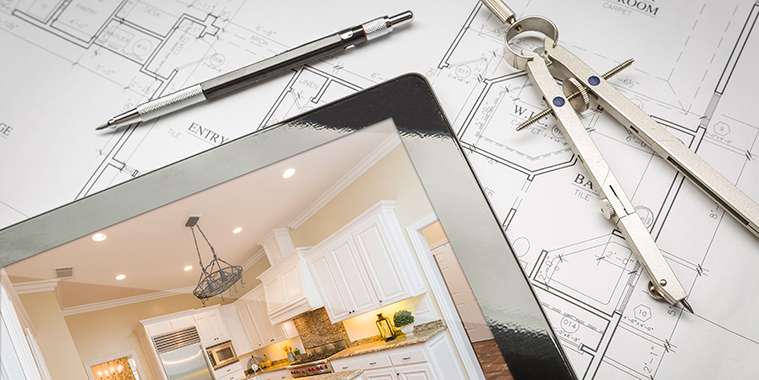So you’ve decided to buy a new home. Now begins the exciting journey filled with anticipation, questions, and perhaps a bit of stress. After all, this may be the most important decision and investment you will make in your lifetime.
By asking the right questions and following the right steps, you will become more focused and enter your journey of new home ownership on a positive note.
Research your finances
Before you walk out your door to begin looking at show homes, take a close look at your financial position. If you begin looking at homes before researching your finances, you may be swayed by homes beyond your financial grasp.
Begin by asking a few questions:
• How much can you comfortably spend each month on a mortgage, property taxes, and utilities?
• How much will you spend on decor and furnishing?
• Do you have any financial debt? How long take will it take to dissolve it?
• Are there any pending financial obligations to consider? New car? Children? Vacation?
• Will there be any changes in income in the future?
Choose a builder
Choosing the right builder may be as important as choosing your home. This is the person responsible for building your dream home — your future!
Look for a builder that you feel comfortable with. Do some research. Word of mouth is a good place to start. Keep in mind, though, that many lending institutions insist that your mortgage be taken out on a home built by a member of a warranty program. Visit mbnhwp.com for a list of builders in our program. Take your time meeting with potential builders and don’t be afraid to ask questions. Here are some to start with:
• Do you belong to the New Home Warranty Program of Manitoba?
• Do you have any show homes we can visit?
• Can you meet our needs within our budget?
• When could you begin construction, and how long will it take to finish?
• What about changes during construction?
Arrange your mortgage
Now that you’ve chosen your builder and have a good idea of how much you can spend, it’s time to secure a mortgage. Take into consideration interest rates, your past history with the lending institution, access, and the type of mortgage they are willing to provide to you.
Establish a relationship with your builder
Don’t let negotiating with your builder get in the way of forming a positive working relationship. If you have problems in the future, you want to be on good terms.
Choose the right home
Be 100% positive about what you want your new home to look like and how you want it to work. A home should be both functional and comfortable.
Start by visiting your builder’s show homes and looking over his/her building designs. Keep in mind all future considerations, such as additions to your family.
While choosing the components of your home, keep in mind that not everything will be covered under warranty. When discussing your new home with your builder, be very specific. At the same time, listen carefully to his or her suggestions. Keeping the lines of communication open at all times will help the builder take your vision of the perfect home and turn it into a reality.
Make the purchase
You’ve now decided on the specifics of your new home and are ready to sign on the dotted line. Be sure you have read your contract thoroughly and questioned anything that isn’t clear. Remember — no question is too small! Don’t feel awkward about taking your contract to a lawyer for clarification. It’s important you are satisfied with every detail, right down to the colour of your cabinets. When you sign your contract you’re forming a legally binding agreement between you and your builder.
For a custom built home, a builder will draw from the funds you have set aside for each phase of the construction. In other words, you are paying only for work done and materials used as the construction progresses.
However, it is standard practice for a builder to ask for a deposit before beginning construction of your home and the amount will vary depending on the price of your home. If a builder cancels construction or goes bankrupt, our Warranty Program offers deposit coverage up to a maximum of $25,000 if the builder becomes legally obligated to refund your deposit but fails to do so.
Construction begins
Now that construction has begun, you may simply be comfortable sitting back and relaxing for the next few months. Or you may be the type of person who may visualize themselves camping out on the lawn, watching every moment of construction.
We suggest a middle approach. Keep in touch with your builder, but don’t interfere If you made an informed and confident decision in the beginning when choosing your builder, choosing your home, and defining the specifics of your contract, you should feel confident that your builder will meet your expectations. However, this doesn’t mean you shouldn’t remain involved.
Your builder may have already set out specific dates following each phase of construction when you can meet to view the home. With your builder present, you can ask questions, and he or she can point out important aspects of the construction process that may benefit you in the future. Remember, if you opted to choose a builder from our Warranty Program, you can rest assured that any warranty item not met with during construction will be resolved following possession.
Take possession
Prior to possession, your builder will arrange a date and time for your “walk-through”. This is your opportunity to inspect your new home, to ensure that the details of your contract have been met.
If you have established a good relationship with your builder, you should feel comfortable pointing out any items that you question or disagree with. At this time, you and your builder will compile a list of these unfinished items or corrections to be made, with an estimated time of completion. Be thorough in your inspection, and honest with your builder.
At this time you will also sign any closing papers which will include the deficiency list, and your Certificate of Possession and New Home Warranty.
Finally, make sure both you and your builder have signed and dated at the bottom. You will retain the white copy of the certificate, the builder will keep the yellow copy, and the pink copy will be forwarded by the builder to the Program. It is a good idea to make a copy of your certificate immediately and then place the original in a safe place. Once we have received our copy, we will send you an informational package.
If you decide to sell your home, you may want to include your certificate in the sale. Our Warranty states that in the event the original homeowner sells the home and transfers our Warranty Certificate to a new owner, all the obligations of the Warranty Certificate will be binding upon any subsequent homeowner.
First year of ownership
During your first year of ownership, keep track of any deficiencies you encounter and discuss with your builder. It’s important that you make any warranty claims prior to your one year anniversary of possession.
Remember that owning a home requires ongoing maintenance and not all the issues you may encounter over time are due to the negligence of the builder. Visit our website to read the Guide to Care and Maintenance of Your New Home to inform you.
By following these tips, custom building your brand new home should be an exciting experience.
— mbnhwp.com



